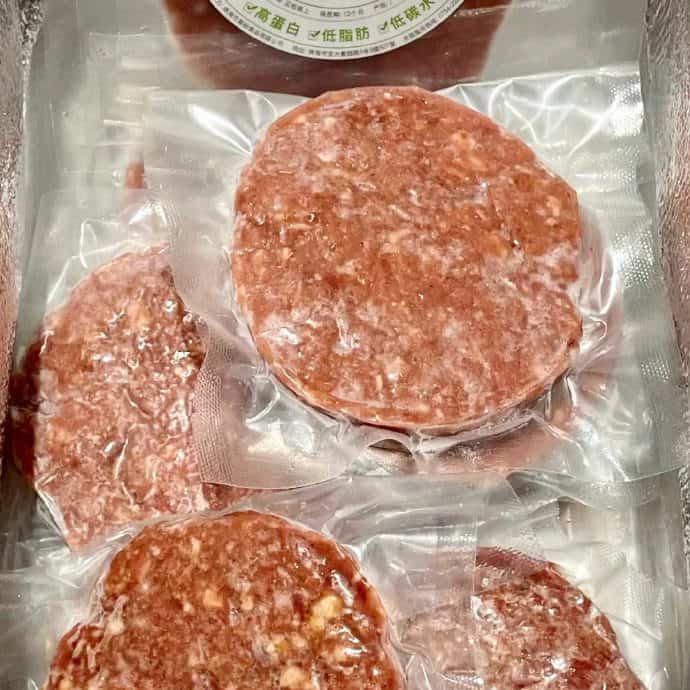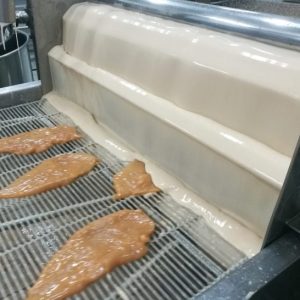Внимание производителям продуктов питания и сетям ресторанов! Вы когда-нибудь удивлялись огромному количеству идеально одинаковых, сочных гамбургерных лепешек, вылетающих из кухонь фастфуда или заполняющих морозильные камеры супермаркетов? За этой однородностью скрывается удивительный подвиг пищевой инженерии и Высокопроизводительное промышленное оборудование для пищевой промышленности. Как ведущий производитель пищевого оборудованияМы приоткрываем завесу над высокопроизводительной линией по производству котлет для гамбургеров. Откройте для себя процессы и необходимое оборудование питает этот основной продукт питания во всем мире.
Цель: постоянное качество, безопасность и масштабность
Промышленное производство котлет - это не просто измельчение мяса. Речь идет о доставке миллионов пирожков:
- Одинаковые по размеру и весу: Очень важно контролировать порции и время приготовления.
- Безопасность и соответствие нормам: Соблюдение строгих мировых стандартов безопасности пищевых продуктов (HACCP, GMP).
- Сочный и ароматный: Сохраняет влажность и вкусовые качества от партии к партии.
- Эффективное производство: Максимизация производительности при минимизации отходов и трудозатрат.
Промышленная линия по производству гамбургерных котлет: Пошаговое описание
1. Прием и подготовка сырья: Основа
- Входящая инспекция: Цельные мышечные отрубы (куски, круги, обрезки - чаще всего говяжьи, но часто встречаются и смеси из птицы и свинины) или предварительно измельченное мясо поступают в охлажденном или замороженном виде. Металлодетекторы и визуальные проверки являются важнейшими средствами контроля качества первой линии.
- Уменьшение размера (при необходимости): Большие разрезы могут проходить насквозь промышленные нарезчики или грубые измельчители чтобы создать управляемые кусочки для основного измельчения. Ключевое оборудование: Конвейеры, транспортеры, металлодетекторы, предварительные дробилки/грубые измельчители.
2. Точная шлифовка: Текстура - это все
- Первичное измельчение: Подготовленное мясо проходит через высокопроизводительные промышленные шлифовальные машины. Выбор размер шлифовальной плиты (например, 3/16″, 1/4″) имеет решающее значение для конечной текстуры лепешки - мелкий для более гладкого стиля "фаст-фуд", более крупный для премиального "паб-стиля". Измельчение часто производится при контролируемой низкой температуре для сохранения целостности жира и безопасности продуктов. Ключевое оборудование: высокопроизводительные измельчители (одноступенчатые или двухступенчатые), системы обработки охлажденного мяса, шнеки.
3. Смесь: Вкус, связывание и консистенция
- Входящие в состав ингредиенты: Мясной фарш входит в большой промышленные миксеры/блендеры. Здесь добавляются точные количества:
- Приправы: Соль, перец, специи, усилители вкуса.
- Папки: Хлебные крошки, крахмал, яичный порошок или немясные белки (например, соевый или пшеничный глютен) для улучшения связывания и уменьшения усадки.
- Вода/лед: Для контроля влажности и регулирования температуры.
- Усилители: Фосфаты (для улучшения влагоудержания/сочности), антиоксиданты.
- Опыт смешивания: Очень важно контролировать время перемешивания. Недостаточное перемешивание приводит к несоответствию, а избыточное может сделать мясо пастообразным и жестким. Вакуумные смесители становятся все более популярными, удаляя воздушные карманы для улучшения текстуры, связывания и уменьшения окисления. Ключевое оборудование: Миксеры периодического действия (лопастные или ленточные), миксеры непрерывного действия, вакуумные миксеры, системы подачи ингредиентов.
4. Совершенство формовки: Скорость, форма и точность
- Сердце линии: Мясная смесь подается в Высокоскоростные машины для формирования котлет для гамбургеров. Именно здесь происходит магия последовательности:
- Бункер и шнеки: Постоянно подкармливайте смесь.
- Формовочная головка и пресс-форма: Точное формирование лепешек с помощью форм и давления. Машины могут производить лепешки различных размеров (например, слайдеры по 1 унции, стандартные по 4 унции, паб по 8 унций) и форм (круглые, квадратные).
- Контроль веса: Использование передовых систем тензодатчики или объемные наполнители для исключительной точности веса (обычно ±1-2%), минимизируя потери.
- Выходная скорость: Современные формовочные машины могут производить тысячи пирожков в час. Ключевое оборудование: Многорядные автоматические машины для формирования патиссонов, системы чередования/укладки (для разделения бумаги или пластика).
5. Быстрая заморозка (IQF): Сохранение свежести
- Индивидуальная быстрая заморозка (IQF): Сформированные пирожки быстро перемещаются в Спиральный морозильник или туннельный морозильник (от -30°C до -40°C или холоднее).
- Почему именно IQF? Замораживает каждую лепешку по отдельности за считанные минуты. Это:
- Предотвращает образование крупных кристаллов льда (защита текстуры/сочности).
- Останавливает рост бактерий.
- Позволяет котлетам оставаться отдельными и свободно вытекать из упаковки.
- Значительно увеличивает срок хранения. Ключевое оборудование: Спиральные морозильные камеры, туннельные морозильные камеры, конвейеры для транспортировки холодного хранения.
6. Упаковка и распространение: Готовность к рынку
- Автоматизированная упаковка: Замороженные котлеты подаются на упаковочные линии.
- Взвешивание и упаковка: Машины взвешивают порции (например, 10 котлет на пакет) и укладывают их в пластиковые пакеты или коробки. Упаковка в модифицированной атмосфере (MAP) часто используется, заменяя воздух газовыми смесями (например, CO2/N2), чтобы еще больше продлить срок хранения и предотвратить ожог морозильной камеры.
- Упаковка в виде кейса: Отдельные пакеты упаковываются в транспортировочные коробки.
- Кодирование и паллетирование: Ящики кодируются с информацией о партии/дате и укладываются на поддоны для хранения и отгрузки. Ключевое оборудование: Автоматизированные весы, упаковочные машины, вакуумные/мап запайщики, упаковщики, паллетизаторы, системы кодирования.
Безопасность и качество: Неотъемлемые принципы, основанные на процессах и технологиях
Каждый этап включает в себя строгие протоколы:
- Соответствие требованиям HACCP: Критические контрольные точки (температура, металлодетектор) строго контролируются. Автоматизированная регистрация данных очень важна.
- Обнаружение металла/рентген: Патиссоны проходят через детекторы после формовки и иногда после упаковки, чтобы обеспечить безопасность.
- Sanitary Design: All machinery (grinders, mixers, formers, conveyors) must be constructed from food-grade stainless steel (e.g., 304, 316L) with smooth, crevice-free surfaces, easy-clean access points (CIP/SIP where possible), and designed to prevent bacterial harborage. This is paramount.
- Temperature Control: Strict monitoring from receiving to freezing.
- Traceability: Batch coding throughout the process.
The Machinery Manufacturer’s Perspective: Efficiency & ROI
Investing in the right industrial food processing equipment isn’t just about making patties; it’s about optimizing your entire operation:
- Throughput: High-speed formers and integrated lines maximize output.
- Labor Savings: Automation drastically reduces manual handling.
- Yield Optimization: Precise forming minimizes giveaway.
- Consistency & Quality: Advanced machines deliver unmatched uniformity, improving end-product quality and brand reputation.
- Safety & Compliance: Equipment designed and built for sanitary operation simplifies meeting regulatory requirements.
- Durability & Uptime: Industrial-grade machinery ensures reliability and minimizes costly downtime.
Conclusion: Engineering Delicious Consistency
The journey from raw meat to a frozen hamburger patty ready for your grill is a complex ballet of food science, stringent safety protocols, and highly specialized food processing machinery. For manufacturers aiming for scale, efficiency, and uncompromising quality, choosing the right industrial grinders, mixers, patty forming machines, and freezing systems is the cornerstone of success.
Ready to Optimize Your Patty Production Line? As experts in food machinery manufacturing, we design and build robust, sanitary, and high-efficiency equipment tailored to the demands of industrial hamburger patty production. [Your Company Name] provides solutions from grinding and mixing through forming, freezing, and packaging integration.
Contact us today for a consultation and discover how our industrial food machinery can revolutionize your hamburger patty output!



